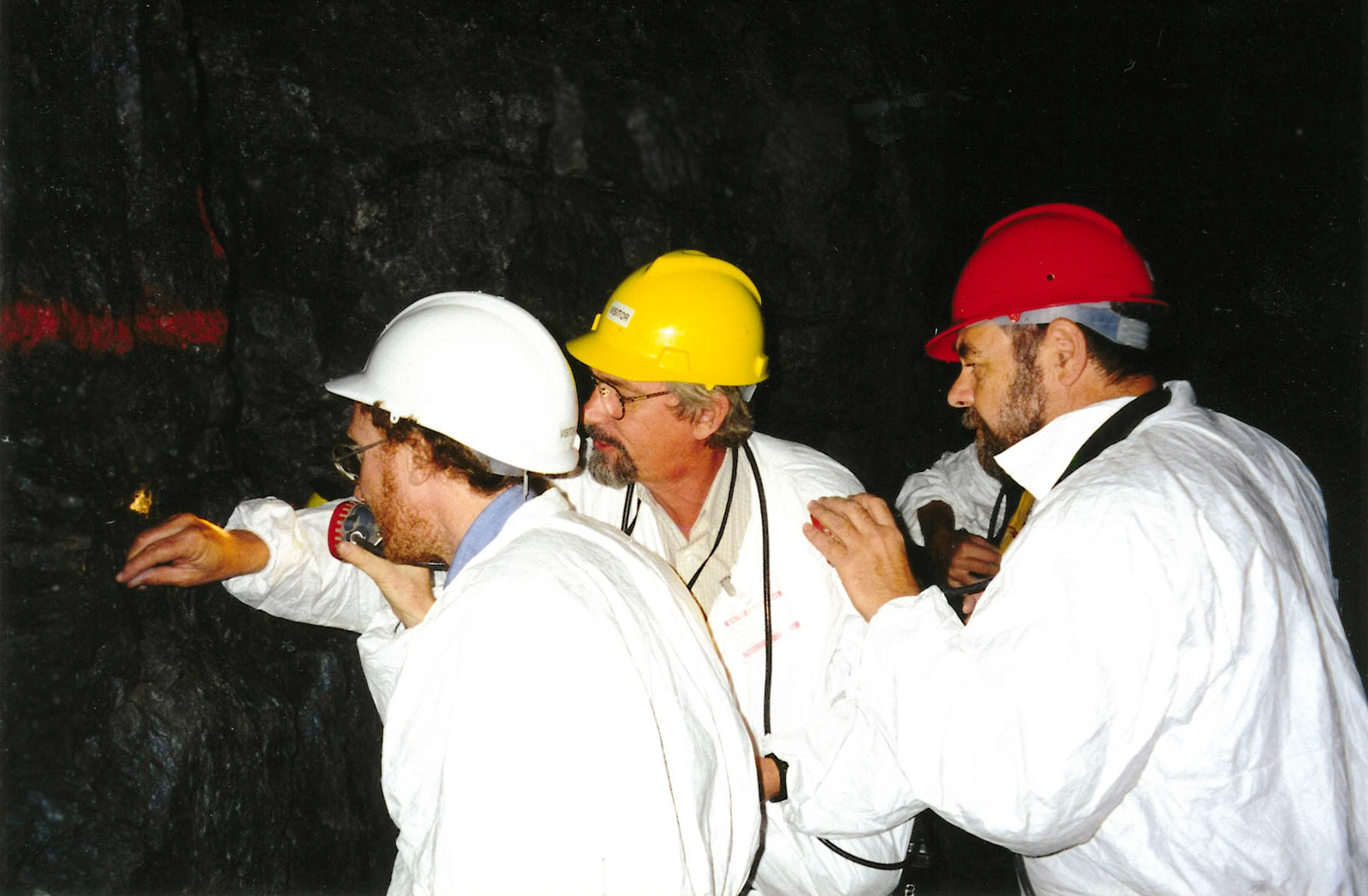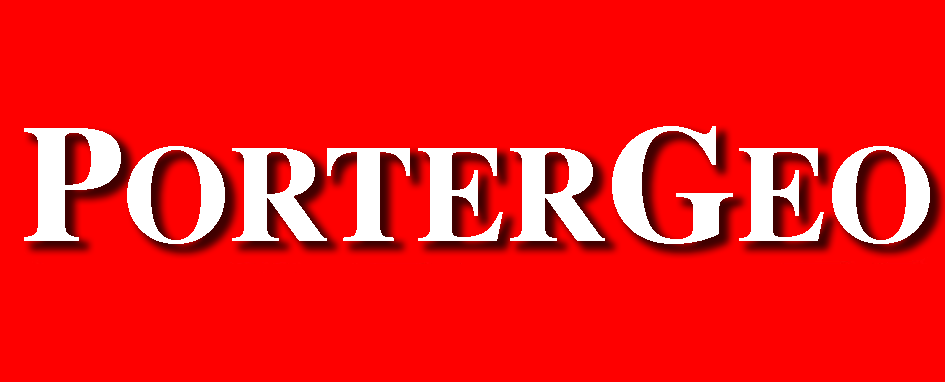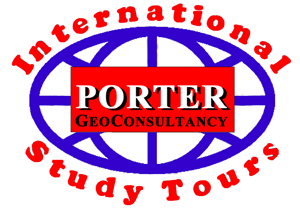| |||||||||||
| |||||||||||
| |||||||||||
|
Image: Underground at Galmoy in Ireland.

By Mike Porter
In the bright sunlight of the Arctic summer night, the myriad lakes below gleamed like burnished silver. Winding between them, the shimmering ribbon of the Noatak River flowed west towards the Chukchi Sea that separates northern Alaska and Siberia. The real precious metals lay behind however, at Cominco's fabulous Red Dog mine, one of the world's greatest silver-lead-zinc deposits. The second of the chartered Cessna Caravans had just levelled out, en route from Red Dog, returning to Kotzebue on the coast. On board were nine of the seventeen geologists of the Australian Mineral Foundation's ZINC '98 International Study Tour. Later all would agree that this day had been the highlight of the whole tour. But for now, they were only half way through the second of three modules that made up that tour. By the end, those that took all three would visit fifteen of the world's greatest zinc bearing deposits in Europe and North America. They had left Kotzebue at 7:45 that morning and flown 200 km north to the de Long Mountains, still partly shrouded in cloud. After circling the Red Dog open pit, and the neat, compact red and white mine complex, they landed an hour after take off. The Red Dog of today looked quite different to that of the 1970's when the natural orange iron staining in the creeks had first attracted the curiosity of the bush pilot Herb Baker, who flew the wastes of Northern Alaska, his red dog beside him on the co-pilot's seat. The twelve hour visit to Red Dog commenced with an excellent set of briefings by chief geologist Scott Jennings and his staff. These covered the mine, the exploration history and the regional setting, geology and mineralisation of the ore deposits. This was followed after lunch by a comprehensive inspection of all of the ore types and hosts in the pit, and a reconnaissance of the un-disturbed up-dip expression of the adjacent Aqqaluk deposit that constitutes half of the resource at Red Dog. After more discussions, and a pre-arranged presentation by a tour participant on his experience working on the Irish zinc deposits, the group had dinner and took off on the return flight. This had been a very special, but never-the-less representative day on the tour. Unique Opportunity The subject of the AMF ZINC '98 International Study Tour was the "Zinc Deposits of Europe and North America". It visited fifteen of the greatest zinc bearing orebodies and resources in the world, divided into three separate modules, covering "European", "North American Sediment Hosted" and "North American Volcanic Hosted" deposits respectively. Some participants took one module, others two, while a number remained through the whole tour. One major company, Pasminco, put a different group on each module. All found it to be a unique and rewarding professional experience. They came from diverse locations and backgrounds, in Australasia, Asia, Africa, Europe, North and South America. In their time together they shared the travel from the long populated areas of the old world, to remote and magnificent locations in the Americas; the early morning starts and late nights; the workshops, seminars and geological reconnaissances; the local and international experts; the technical discussions and exchanges that arose along the way. But most of all the incomparable mine visits. Those that took the full tour travelled together in cars, buses and aircraft for more than 60 000 km, right around the world. One of a Series This was one of a series of such tours offered by the Australian Mineral Foundation, aimed at practising geoscientists within the mining and exploration industry, world wide. It afforded a unique opportunity for them to advance their understanding of the ore deposit types on which they work. The strategy of these tours is to go to the best examples of the particular ore type under consideration, wherever they may be in the world, touch and study them first hand, and talk to the people that know them the best - the geologists who work on and around the ore deposits. Three such tours are run per year, with over 70 of the world's classic ore deposits having been visited in the last two years. More are planned for 1999 and beyond. The Ore Deposits The study tour commenced with the European module in Lisbon, Portugal, on Wednesday July 15, when participants came together from around the world. Those who took the full tour would travel together through Portugal, Spain, Ireland, Canada and the US, to finally disperse from Green Bay, Wisconsin on Tuesday 18 August. The deposits of the European Module comprised the Neves Corvo Cu-Zn mine of the Iberian Pyrite Belt in southern Portugal, the Reocin carbonate hosted zinc mine in northern Spain, and the Navan, Lisheen and Galmoy carbonate hosted zinc orebodies in Ireland. The North American Sediment Hosted module visited the great Sullivan mine in British Columbia, the Coeur-Galena Ag-Pb mine in the Coeur d'Alene district of Idaho, then on to Red Dog in northern Alaska, back to Faro/Anvil in the Yukon, before the Howards Pass deposit on the Yukon-Northwest Territories border. The North American Volcanic Hosted module included visits to the mines at Flin Flon, Kidd Creek, Bouchard Hébert (ex-Mobrun) and Brunswick #12, right across Canada, and the Crandon Project in Wisconsin, USA. These represented mineralisation in Archaean, Lower and Middle Proterozoic, and Palaeozoic host volcanics. Seminars, Workshops and Experts The mine and project visits were supported by seminars and workshops presented by international and local experts, as well as regional briefings and geological reconnaissance. The European overview seminar in Dublin for the ZINC '98 tour was run in conjunction with the Irish Association for Economic Geology. It attracted over 120 geologists from Ireland and elsewhere in Europe and provided a wide base for discussion, exchange of experience and networking. The seven speakers included internationally known experts Duncan Large and John Ashton. The North American Sediment Hosted module began with a one day workshop in the offices of Cominco Exploration in Vancouver. Well known consultant geologist Ken Dawson and Cominco Chief Geologist Dereck Rhodes provided a context setting session on the tectonics, geology and metallogeny of western North America, and a description of other key sediment & carbonate hosted deposits not to be seen on tour. In the afternoon four tour participants gave presentations on Australasian zinc deposits with which they had experience, and discussed these with the Cominco staff present. Other high level briefings, field based workshops and reconnaissances were provided by local expert consultants, company exploration groups and government geological surveys in Portugal, Canada and the US. Organisation The mines and prospects visited were selected by the exploration managers of the four "core group" member companies that had agreed to commit geologists to the tour. These were, in alphabetic order, Normandy Mining Ltd., North Ltd, Pasminco Ltd and Rio Tinto Exploration Pty Ltd. These progressive companies, along with the others that sent geologists on the tour, demonstrated foresight in developing their staff to give them a competitive advantage by better understanding the targets for which they explore. All of the planning, costing and tedious organisational detail of the tour were carried out by the AMF. All the participants had to do was get to the starting point with their field and travel gear, and to read the preparatory literature compiled and pre-delivered by the AMF. This organisation by the AMF permitted costs to be kept to a minimum, while removing all of the hassle and allowing the participants to focus on the main goal - some of the greatest zinc deposits in the world outside of Australia. What Next ? The planned 1999 tours include OzTour '99 visiting a comprehensive selection of the major base metal deposits right around Australia in May, and Pacific Gold '99 going to the major gold deposits around the Pacific, in Asia, North and South America, in September-October. Mike Porter of Porter GeoConsultancy Pty Ltd designed, organised and led this International Study Tour for the Australian Mineral Foundation. Return to TOP | |||||||||||











